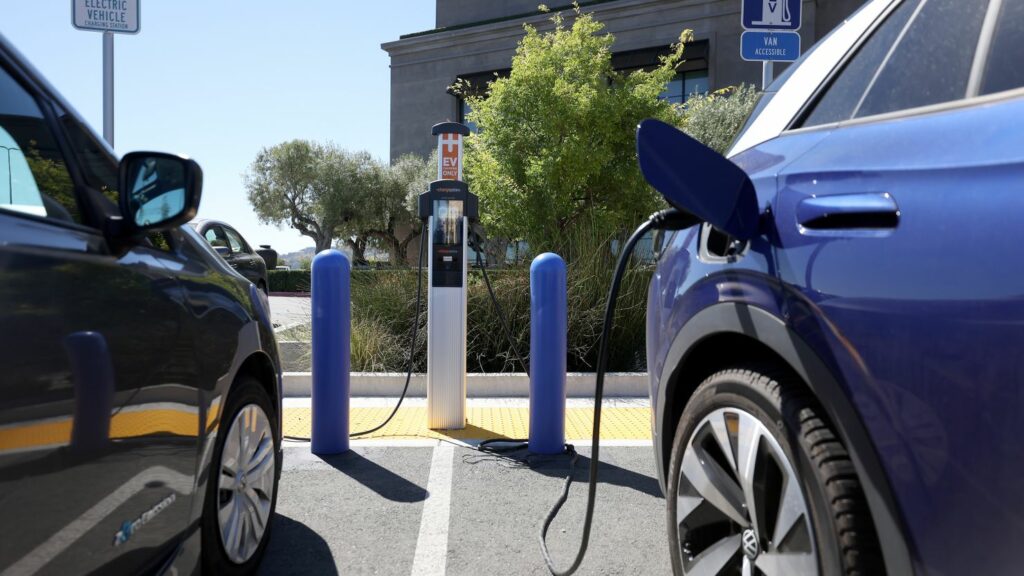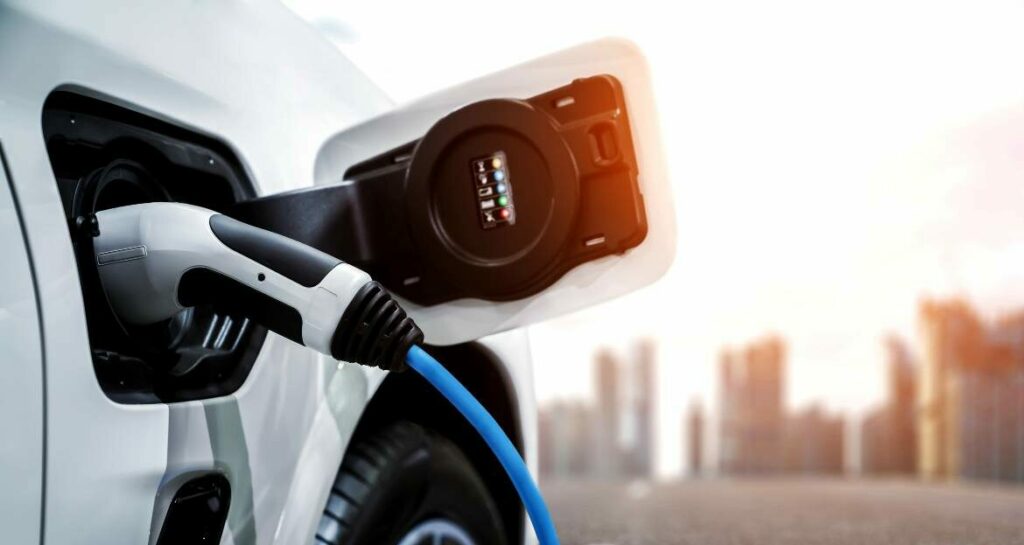As the electric vehicle lack of revolution grinds to a halt without subsidies, we’re told that a Chinese firm has invented a way to charge an EV in five minutes. It’s the sort of thing swallowed whole by media outlets that regularly run features like “There’s a Race to Power the Future. China Is Pulling Away.” But when we read things like “THIS NEW EV BATTERY PATENT CLAIMS EXTREME RANGE & ULTRA-FAST CHARGING (5 MINUTES FLAT)” our immediate reaction, quoting from an email containing same, is “I heard it too but I should think it’s highly unlikely. Presumably if they had you could also charge your cellphone in about eight seconds. And a lot of things would explode.” Including press credibility.
It is clear that battery technology will continue to improve, sometimes incrementally and sometimes by leaps and bounds. But the laws of physics will not change. The kind of charging speed they’re describing would, literally, melt current charging cables. And it’s not as though existing slow-charge Chinese EVs are exactly safe; in fact they are increasingly banned from underground car parks in… China. (Also in Canada B.C. Ferries is restricting damaged EVs from being put on its ships lest they should incinerate them, leaving many hipster inhabitants of the trendy islands between Vancouver and Victoria stranded and frustrated.)
A recent smug attempt to circumnavigate the UK in an electric van to demonstrate that “it was not only possible, but, ideally, a breeze to complete a four-week road trip in an electric van” ended with the author proving the opposite, not least because EVs have limited range, charge slowly and unreliably, and generally just don’t get it done. Even when not on fire. So it would be nice if they charged faster. If it worked as advertised. But it wouldn’t. (Ironically Volkswagen was so sure it would that they loaned him “an all-electric ID Buzz five-seater van, in two-tone candy white and bay leaf green, for the duration.” As he notes, “The specs were as impressive as its surfy two-tone looks”. They just weren’t accurate, especially the rate of charging.
As for the non-existent way faster ones, which the Guardian was hyping four years ago, another major problem is that they’d need a lot of power. A really truly scary amount. Like 1,000 kilowatts at 1,000 volts. As Automotive World observed in a reasonably skeptical article:
“A single charger delivering 1,000kW (1MW), as BYD’s Super e-Platform requires to add 400km of range in five minutes, would consume roughly the same amount of power as 450-500 homes. That’s equivalent to a small residential substation. Now imagine a charging station with multiple ultra-fast chargers…. Sudden, massive draws of power might destabilise local electrical grids without proper management systems in place, and building this infrastructure isn’t cheap. A standard EV charging pack, including installation, costs around £800-£1,500 (US$1,081-US$2,028). As a result, ultra-fast chargers would likely run into tens or even hundreds of thousands each, especially after factoring in all of the other necessary components, such as cooling systems, reinforced cabling and substation upgrades. The immense power demands of ultra-fast charging, especially during peak hours, make deployment a challenge for utility providers. Without advanced grid management, simultaneous high-load charging could destabilise local infrastructure.”
If anyone’s going to invent a five-minute charge for an EV, we think it will be using the system that is mysteriously absent today where you drive into the station, they swap out your depleted battery for a fresh one, and you drive off while they charge the old one out back. The one we used to use for flashlights and things before they all grew USB ports. But old-fashioned is out these days, unless you count old-fashioned intellectual gullibility about socialism and especially communism.
Even Canada’s normally right-leaning National Post ran an item “Trump stifling clean grid could help China win at AI” that had the same sort of we’re-hopeless-losers-our-enemies-are-brilliant tone to it. And it contained a remarkable number of fatuities per paragraph, starting with:
“China is pouring money into energy production to support its bid to dominate AI. America’s tech industry, meanwhile, has been scrounging for more energy to run power-hungry AI data centres and strongly urged Congress not to wipe out solar and wind tax credits.”
Well sure. Partly they’re the cool kids and partly they want the public to pay their energy bills. Why is a journalist not skeptical of companies lobbying for subsidies? What do they teach them in journalism schools?
Well, when the writer in question is a “Business reporter covering the energy transition” with a B.A. in “Rhetoric” and an M.S. in “Journalism” it’s possible they teach them to be advocates dressed as analysts.



I literally laffed out loud when I read about the "hipsters" stranded on trendy islands in BC with their EV's.Looks good on them!And SHAME on anyone who buys a Chinese BYD EV!How would you like one of these timebombs parked in your condo building's underground garage while you're sleeping?It's bad enough that most of our hardware and small appliances from Canadian Tire and Walmart are made in China.But yeah,low cost,safe,efficient,low maintenance EV's are always "just a few years away".Just like a few years ago.
These superfast charges exist only in the dreams of the envirogoofs! Leaving the massive grid requirements aside there is the small issue of electrical resistance otherwise known as Ohm's law which states that "Electric current through a conductor between two points is directly proportional to the voltage across the two points"! We conduct high energy electricity down relatively small diameter conductors by raising the voltage as high as 167,000 volts, as a frame of reference the power in a wall socket is at 110 or 220 volts, but 167,000 volts is a very dangerous level of voltage. It is also true that 67% of the power generated is lost to resistance heating in the wires (electrical energy converted to heat energy)....so, the only way to cram that much power down a copper conductor that a human being could handle is keep the voltage very high. This might theoretically increase charging speeds, but it will kill everyone involved sooner or later as the high voltage will jump a large airgap on its way to ground...right through the arm and out through the feet of the happy EV owner, 167,000 will really get those environmentalists dancing!
Tom, I'd wager you are an informed man. Maybe even an electrical engineer. I'd get to the same understanding you have with a bit of research, even if I know little more than very basic physics. Assuming the average journo is at about my level of knowledge, one's got to ask - what exactly is stopping them reach the same conclusions as you? A quick google search, a bit of bookwork....and they get paid for it. But they don't do it. Almost as if they have a different agenda, unconnected with truth or public service...
My understanding is that operators of power hungry AI data centres are buying up mothballed nuclear power plant, to acquire reliable electricity, and could not give a fig for unreliable solar, wind and storage!
One of the problems with grid-following inverters used by wind and solar generators is they need an external frequency reference to sync to. This is easily and cheaply provided by a local rubidium clock, with the 10MHz output divided down to 50/60Hz.
Grid forming generators would also have to use the same system, but since they already sync to some existing AC supply when going online, this would not be difficult...
The media assume that China is way ahead in the EV market because they are environmentally conscious and engineering geniuses to boot. But there is a more mundane reason. China does not have much oil but lots of coal. Moreover, in the event of a major war it would be fairly easy to block seaborne imports of oil to China. If the burgeoning Chinese middle class want cars, it makes strategic sense to concentrate on EVs rather than combustion engines. And if they tend to burst into flames from time to time - well, life is fairly cheap in China.